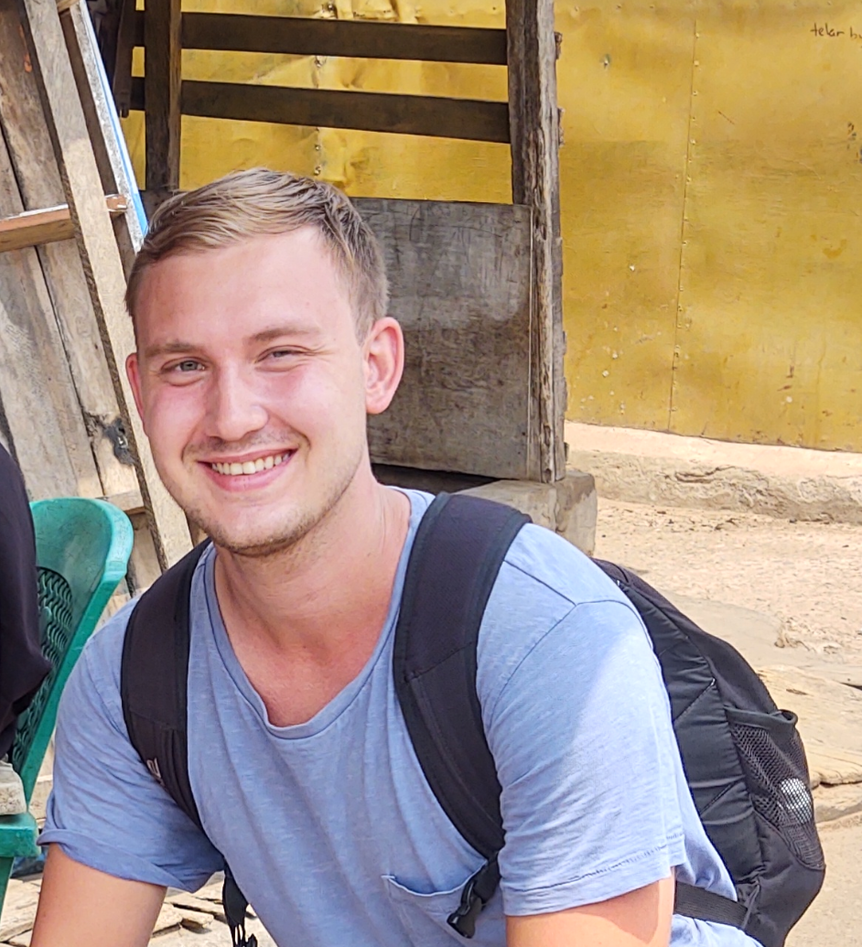No-man’s land
How is a local community developed and operated, with hundreds of homes and economic enterprises close together - in an area where none of the residents own or have legal control over the land? The neighbourhood of Ruga in Accra, Ghana is an example of how inhabitants and small-business owners together are changing and shaping the urban landscape to the benefit of the people living there.

Main content
Inhabitants are changing and shaping the landscape
Ruga is established on what is officially state-owned land. Most people are living in severe poverty and housing and infrastructure are of low quality. In Ruga, the informal economic sector dominates. Small businesses, sole proprietorships and family businesses characterize the cityscape. The local economic operators often run their businesses from small containers, a table on the roadside or from their own homes. What they all have in common is that the public space lays the foundation for business operations.
Since the area is small and the people lack both permits to live and work there, the infrastructure and the cityscape also bear the mark of this. None of the parts are built for comfort or aesthetics. Instead, the way they are shaped, are based on the residents' specific needs. Houses are used as business premises. Large trees act as parasols and umbrellas, allowing a neighborhood bar to be set up underneath. Roadsides are furnished with tables, chairs and kitchen equipment for restaurant operations. With little financial capital, small financial margins and few official rights, the use and utilization of public space for various purposes has been absolutely essential to make life go round. In this way, residents and business operators have acquired a roof over their heads, as well as an income to feed themselves and their families. One of the most interesting things here is how this way of using existing infrastructure, housing and urban space simultaneously lays much of the foundation for local community development. The costs of infrastructure for business operations are kept down and the prices of the goods are kept low. People can create and run economic enterprises at a cost level they themselves can afford, and where customers can afford the goods and services. Despite poverty, poorly developed infrastructure and low housing standards, Ruga has become a place that constantly attracts new people as a result of this.

The ‘modern’ Accra is knocking on the door
In recent decades, state and regulated private actors have increasingly made themselves felt in Ruga. Old neighborhoods and small businesses have had to give way to new office buildings, religious institutions, middle-class neighborhoods and exclusive apartment blocks. The place therefore stands at a crossroads, where modern Accra puts increasing pressure on the traditional local community. There will be less space to live in - and there will be less space to run businesses from.
This is a major concern for many of Ruga's residents. With a lack of ownership of the land they own and use, many risk losing both their house and business as the modernization of the area takes a bigger and bigger place in the cityscape. For many of the citizens, this has already become a reality. In 2020, an entire neighborhood woke up to excavators ready to demolish a housing estate in Ruga. The result of this was that a significant part of the population was left without both a house and a job. Contrary to what one might think, only a small number of those affected actually ended up leaving Ruga. Ruga has largely ended up as a destination for migrants from villages and rural areas in Ghana's northern regions. This also means that many of the residents have strong family, social and cultural ties with each other. In a city like Accra, where informal settlements and an informal economy strongly characterize community life, these social and cultural ties are very important. Many of the people who lost their houses and business premises thus ended up staying in Ruga despite their loss. Here they stayed with family members or other migrants they knew from their villages in the north of the country.
The consequence of this has been that Ruga's tolerance limits are pushed to the extremes. On an area of land that is getting smaller and smaller, people now live even more closely than they did before. Park areas, street stumps and pavements are now largely used for business operations, which means that there are now few remaining areas for purposes other than economic purposes. At the same time, this also means that the economy is put under even stronger pressure. With several business operators in the same area, there will be a greater battle for customers. Prices are pushed lower to stand out in the competition for customers.

The crossroad
Ruga stands out as an example of how a single piece of land can have enormous significance for the people who live their lives there. The place not only fulfills the need for housing. It is a multifunctional area where economic, social and cultural ties merge into one another. Ruga's existence as an open, accessible area has contributed to people with low financial capital and little formal resources having the opportunity to create a life for themselves and their families. At the same time, Ruga's status as an open, accessible area is also what makes it so vulnerable. Private and state property developers are making an increasingly large impact on the area. The development of gated communities, office buildings and luxury apartment complexes are all part of what has become an increasingly modern capital. Located in the middle between the presidential residence, the government district and the embassy areas, today's Ruga is in danger of slowly but surely disappearing.
Peter Krohn-Hansen completed his MA in 2022, with the thesis "Ingenmannsland?". Available at Bora.
